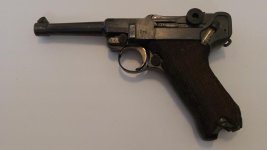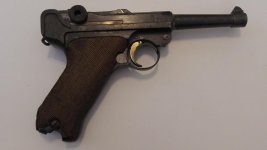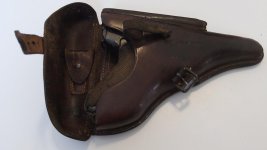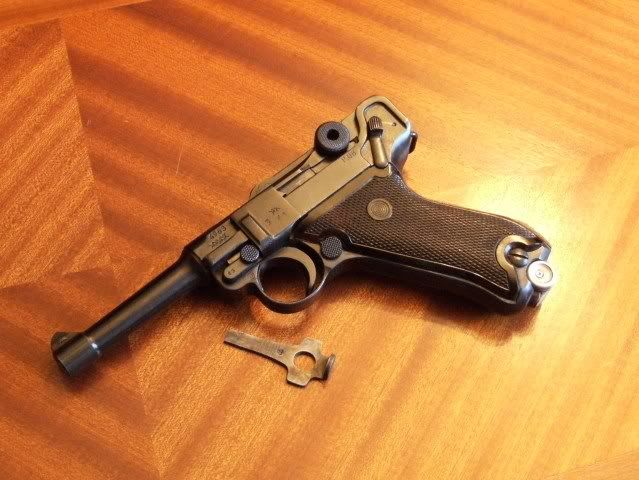Hi,
It's been a long time since I've posted anything on this site, almost 10 years...
We recently moved into our new house and I've been organizing and storing my collection and supplies. This Luger actually belongs to my Mother but has been hiding out with my collection for years. I noticed today that the leather holster was covered with mold, something that must have come about in one of the last rentals we were in. Yuck.
I took everything apart, cleaned the gun up and also cleaned the holster. I figured I would take some pictures of everything while I was at it.
The bluing is quite worn, but the gun is in good shape. All matching serial numbers. The only thing wrong that I can see is the firing pin is cracked. This particular crack doesn't seem as if it would interfere with firing as the pin is pushed forward by the spring that is inside of it.
It is a neat piece of history. There are two mags for it. One has the wooden base, the other plastic. One says PCB-1 on it, the other says PCB-2. These were engraved in by hand by some past owner I would guess. The only story I know is that my Grandfather brought this back after WWII. He was in the PA Infantry, Timberwolves.
Enjoy...
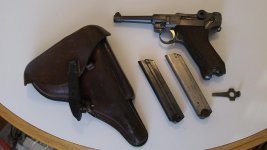
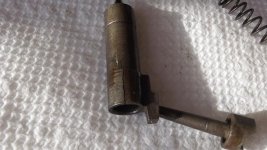
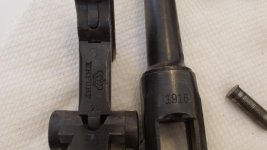
It's been a long time since I've posted anything on this site, almost 10 years...
We recently moved into our new house and I've been organizing and storing my collection and supplies. This Luger actually belongs to my Mother but has been hiding out with my collection for years. I noticed today that the leather holster was covered with mold, something that must have come about in one of the last rentals we were in. Yuck.
I took everything apart, cleaned the gun up and also cleaned the holster. I figured I would take some pictures of everything while I was at it.
The bluing is quite worn, but the gun is in good shape. All matching serial numbers. The only thing wrong that I can see is the firing pin is cracked. This particular crack doesn't seem as if it would interfere with firing as the pin is pushed forward by the spring that is inside of it.
It is a neat piece of history. There are two mags for it. One has the wooden base, the other plastic. One says PCB-1 on it, the other says PCB-2. These were engraved in by hand by some past owner I would guess. The only story I know is that my Grandfather brought this back after WWII. He was in the PA Infantry, Timberwolves.
Enjoy...




